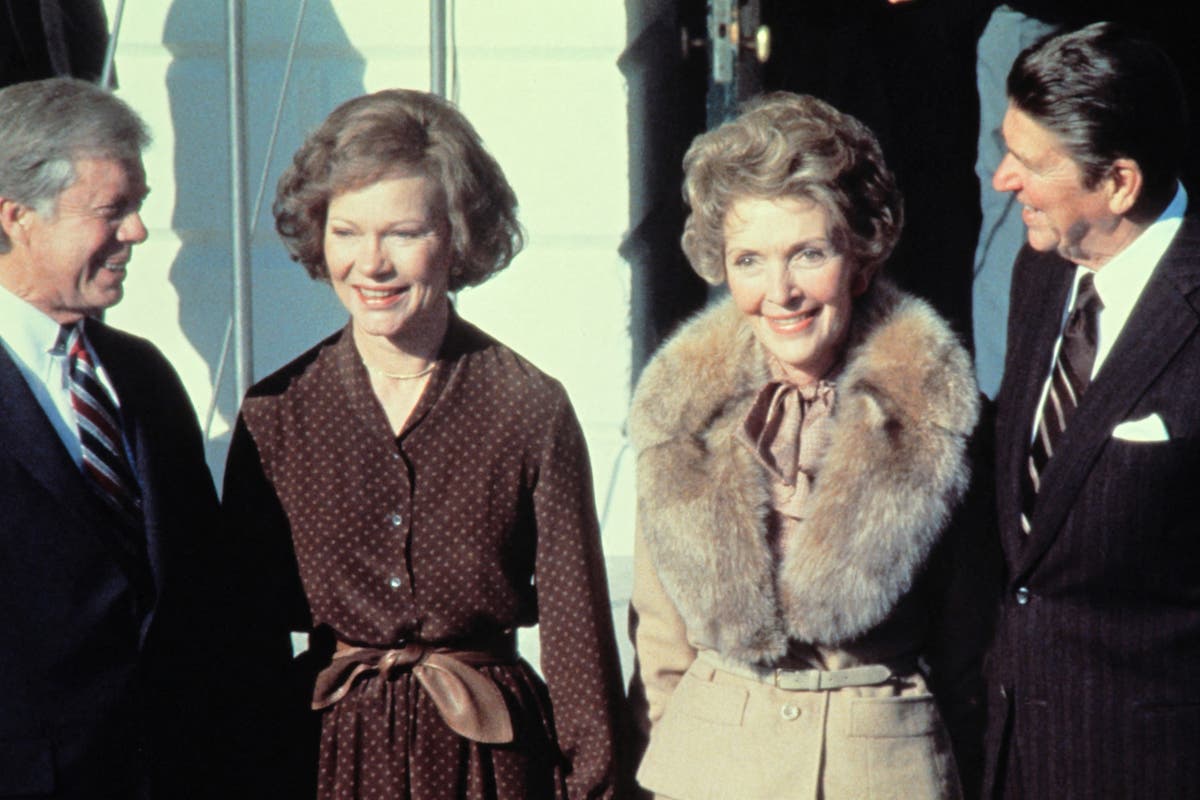The death of Jimmy Carter on Sunday is causing many Americans to look back at the political legacy of the nation’s 39th president.
And what is now known about how that legacy was shaped angers many in his party to this day.
Carter came to the presidency at the end of a chaotic decade in American life, as the U.S. still bore the scars of the bloody culmination of the civil rights movement of the 1960s, with the tragic assassinations of Martin Luther King Jr, Malcolm X and Robert F. Kennedy. The country also faced desperate economic problems, stemming from an OPEC boycott of the U.S. in the Middle East and persistent inflation at home.
The incumbent Democrat was already at a weak point when Kennedy’s brother, Ted, decided he would challenge Carter for their party’s nomination for president in the 1980 election. Primarying a sitting president is rarely done, as party elites see it as self-defeating. Kennedy, an avowed liberal, was upset with the party’s right-trending trajectory under the incumbent, and the Massachusetts senator ran a campaign aimed at humiliating his party’s eventual nominee, ending in a contested convention over the summer. Carter eventually clinched the Democratic nomination but emerged from that race bruised and with a fractured Democratic base behind him.
But one issue hangs above all others as Carter’s defeat in the 1980 presidential election sits in the rear-view mirror: the Iranian hostage crisis. On November 4, 1979, Iranian supporters of the ongoing revolution against the U.S.-backed Shah of Iran’s regime stormed the U.S. embassy in Tehran, taking 52 hostages including diplomats and civilian staff. The takeover occurred months after the fall of the Shah’s government; Reza Pahlavi, now living in exile, had in fact been admitted to the U.S. for medical treatment just one month prior.
That development enraged supporters of Ayatollah Khomenei in Iran and led to a year-long hostage crisis which undermined Carter’s presence on the world stage as well as his image at home. As the hostages languished in captivity for months, Carter’s popularity further deteriorated. In April of 1980, the U.S. mounted an attempt to take back the hostages, still held in the embassy, only for the effort to collapse due to logistical failures. Eight service members died in an accident during the attempt.
Carter would go on to blame the failure of his administration to protect the embassy and subsequently recover the hostages as one that primarily was to blame for his election defeat.
open image in galleryOne issue hangs above all others as Carter’s defeat in the 1980 presidential election sits in the rear-view mirror: the Iranian hostage crisis. (Copyright 2024 The Associated Press. All rights reserved.)
Years later, the story looks a little bit more complicated.
For decades, rumors and accusations have been aimed at Ronald Reagan and his political operatives regarding the fates of the hostages and the failure of the Carter administration to secure their return. William Casey, Reagan’s campaign manager, was a U.S. spy who would go on to lead the CIA under his boss’s presidency. He launched an international intelligence operation that included people around the world who were monitoring the Carter administration’s work to return the hostages, all while his allies spread
The question has remained whether Reagan’s campaign directly or indirectly delayed the return of the hostages through the efforts of his campaign manager.
Barnes, who later revealed the story to the Times, admits having no knowledge of the extent to which Casey and the Reagan campaign could have directed their actions; Connally, his mentor, led the operation. Congressional investigators looked into the claims in the 1990s and were unable to draw a conclusive picture of what happened.
Casey was long dead by then, and Connally died a month after the probe wrapped up. Among the allegations investigated, however, was the claim that Reagan’s campaign manager surreptitiously met with Iranian operatives in Madrid in 1980. A State Department memo was later released confirming he was in Madrid at the time the meeting was alleged to have occurred; congressional investigators never had access to that document.
Reagan and his allies, including his vice president George H. W. Bush would strongly deny involvement in any efforts to delay return of the hostages as rumors and accusations cropped up over the years.
It’s also important to note that no one can say how important any lobbying efforts against the release of the hostages would have been to the length of their stay in captivity; the incoming president could not be held responsible for the initial takeover of the embassy, or the failed effort to retrieve U.S. persons. Carter didn’t exactly win many friends in the revolutionary government with his political support for the Shah.
The hostages were finally released on Jan. 20, 1981, minutes after Reagan took office. Carter’s government had signed the Algiers Accords the day before, securing the release of the 52 Americans while agreeing to unfreeze Iranian assets and refrain from meddling in Iranian affairs.
In the end, dozens of U.S. diplomats and civilians were kept in likely mortal danger as they were used as political pawns by three separate powerful interests — the Democrats, the Republicans, and the Iranians. Jimmy Carter emerged from that trade as the loser, but so did the hostages and their families, who spent decades fighting the U.S. government for recompense they were owed under U.S. law.
